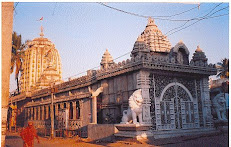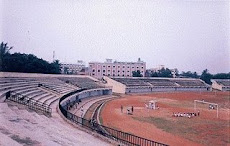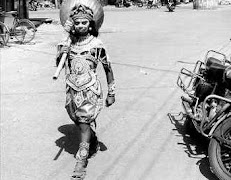Space crunch affects Taptapani deer
park

Berhampur: The Taptapani deer park might lose its mini zoo
status (MZS) because it is yet to better its infrastructure, including
expanding its area. The Central Zoo Authority of India (CZAI) has accorded the
mini zoo status to the deer park in 2009 after the DFO of Paralakhemundi gave
an undertaking to increase the space for free movement of animals. But three
years have lapsed since then and the required area is yet to be acquired. The
park sprawls over 1.86 hectares where 136 different deer species live. It
includes 116 spotted deer, 16 sambars and a barking deer. Though the park
started with a few deer in 1980, there number is steadily increasing. The
forest department wanted an additional 8.4 hectares of land to accommodate the
animals and develop it as an eco-tourism centre. At present, the animals have
to move about in less than one hectare because a portion of the park is meant
for visitors. Also, the space crunch has given rise to infighting among the
deer. Three have died in recent times. "We have sought land in the
adjoining areas of the existing park to make it an eco-tourism spot," said
Jitsatru Mohanty, the DFO of Paralakhemundi. He said the application for the
land alienation was pending with the Ganjam administration. He said the
administration should give us the land at the earliest because CZAI officials
are going to visit the park soon. "Once the MZS status is withdrawn, we
won't be able to house the huge zoo population in the park," Mohanty
added. Ganjam collector Krishan Kumar said the administration was aware of the
fact. "We are pursuing the matter with the government for early hand over
of the land," he added. At present, the forest department is planning an
alternative. "The deer park is overcrowded. We have planned to accommodate
them by creating at least four enclosures and feeding chambers," the DFO
said. (Source: Times of India)
Blackbucks of Ganjam migrating to newer areas in Odisha
Blackbucks, an endangered species found in
Balipadar-Bhetanai area in Ganjam district of Odisha, seem to be migrating to
newer areas, official sources said. At least two blackbucks were rescued by the
villagers from various places in the district. One of them was found at
Balipada near Berhampur, while another at Babanapur near Aska. “We have rescued
a male blackbuck from Balipadar near here. The animal will be handed over to
the Nandankanan zoo authority in Bhubaneswar,” said divisional forest officer,
Berhampur SS Mishra. The blackbuck also reportedly migrated towards Jagannath
Prasad and Belaguntha areas in search of food and water as some of the water
bodies in their habitat have dried up, sources said. “When the blackbucks
migrate to other areas they may be easy target to the poachers. They also meet
with accidents on the roads”, the wildlife experts feared claiming at least
five blackbucks had reportedly died in a fortnight. Officials, however, said
only two died. “We have information about the migration of the blackbuck. But
we have no information about their death due to scarcity of water,” said
divisional forest officer, Ghumusar South R Ch Sethi. He said there were
several ponds in their areas.”Though the water level receded, ponds have not
dried up. The animals are using them,” added another officer at Aska. Increase
in population might be one of the causes for migration of blackbucks to newer
areas, said an expert. The population of blackbuck in the area was counted at
2181 in the last census conducted in July 2011. The population of blackbuck was
estimated at 1672 in 2008. Their number was 551 in 1998, 786 in 2004, 1101 in
2006, sources said. Improvement of habitats, protection given by local people
as well as forest staff was some of the reasons for increase of the population
of the blackbuck in the area, forest officials attributed. The blackbucks have
been protected religiously by the local people for several generations. They
have strong belief the presence of blackbuck in the paddy fields brings
prosperity to the village. “The villagers do not kill the animals even if they
strays into the field,” said president, Blackbuck Protection Committee Amulya
Upadhyaya. (Source: The Pioneer)

.JPG) |
Source: The Sambad
---------------------------------------------------------------------------------------------------------
No space for ponds in bustling Berhampur
Berhampur:
Aina Bandh Street, Canal Street, Hatibandha Street... Though the names smack of
refreshing ponds and canals, today these are just myriad addresses in the
concrete jungle of the bustling Berhampur town, with no sign of any wetlands in
the vicinity. Unplanned growth of the town has eaten away its sundry water
bodies, which once helped control the temperature of the town and satiated the
drinking water needs of its people. "The size of ponds like Hatibandh was
big enough for a herd of elephants to take bath in," recalls senior
citizen Chitta Ranjan Das. Rows of concrete houses have now replaced the water
body. Similarly, Berhampur Development Agency (BDA) filled up Tameya Bandha,
one of the major ponds in the town, to construct a park, while Canal Street
sits on a reclaimed canal, which meandered through the Gate Bazar area in the
past. Retired engineer Ananta Bhola reminisces spending pleasant summers in the
town when canals of Rushikulya river flowing through the town used to fill up
the ponds and maintained the ground water level even during the driest season
of the year. The system was perhaps designed by the then administrators to keep
the town cool and to fulfill its water needs as Berhampur was not situated by
any river bank. The canals have long since been filled up to fulfill other,
seemingly more pressing needs of the town, leading to scorching summers, acute
drinking water crisis and flash floods during monsoon, Bhola laments. The canal
system was made in such a way that rainwater did not accumulate in any area.
But today, due to the encroachment of the wetlands, the town gets was
waterlogged with just a little rain. As many as 89 areas prone to water-logging
have been identified in the town, sources said. Government records reveal there
were over 70 water bodies in the town, which were in possession of the municipality,
revenue department and a few under private parties. Some of them now exist only
in paper, while others are filed with garbage. The remaining few are not
suitable for use. The BMC authorities, however, said they have made an
elaborate plan to reconstruct and renovate the water bodies under the central
government's infrastructure development scheme for small and medium towns.
"The central government has provided about Rs 8 crore under the
scheme," BMC sources said. The total project cost is Rs 16 crore. While 26
ponds have been renovated under the scheme, another 16 ponds would be taken up
very soon, sources added.
Source: Times of India
Demand for Mahurikalua Zoological Park gathering steam in Ganjam District

Environmental
protection and conservation of rare species of animals and birds have gained
currency across the country while attempts in this regard leave a lot to be
desired in Orissa. Ganjam District and the southern region of Orissa are home
to some unique species of animals and birds which are getting extinct over
time. Be it the Black Bucks of Bhetanai, peacocks in Pakidi, Olive Ridley
turtles found in Rushikulya River mouth, Dolphins of Chilika Lake, wild animals
like bears, elephants and leopards of Koraput and Kandhamal etc., all face the
danger of extinction, if better protection measures are not put in place. Wild
and rare animals have importance from the tourism point of view as well. Ganjam
district in particular is known for some popular tourist destinations like
Gopalpur, Chilika lake, Taptapani, TaraTarini, Tampara, Sonepur, Rushikulya
mouth etc. The tourism potential of this region can be harnessed better if an
attractive zoological park is established near Berhampur city at Mahurikalua,
on the lines of Nandankanan, feel many people in Ganjam District. MahuriKalua
is an attractive destination in the Eastern-Ghat range with huge tracts of
reserved forest and is home to some wild animals and even some tribal
habitations as well. Located on the outskirts of Berhampur city, the place is
well connected being on the Berhampur – Koraput State Highway and can well turn
out to be a tourist attraction if converted into a zoo, feel these people. The
local communities in Ganjam are known for protection of rare animals and this
has been appreciated by organizations like the United Nations in the past.
Therefore the zoo at Mahurikalua will be like a recognition of the efforts of
these communities who have taken up such a noble cause for past may years, felt
these people. The establishment of a zoo
at Mahurikalua near Berhampur city will be an added attraction for the tourists
visiting the region and many organizations have demanded its immediate
establishment.
|


.JPG)


















.jpg)


















































Berhampur is such a wonderful place. Just have a quick view of the places of tourism in and around the city - http://thesereneland.blogspot.in/2012/05/silk-city-berhampurodisha-adobe-of.html
ReplyDelete